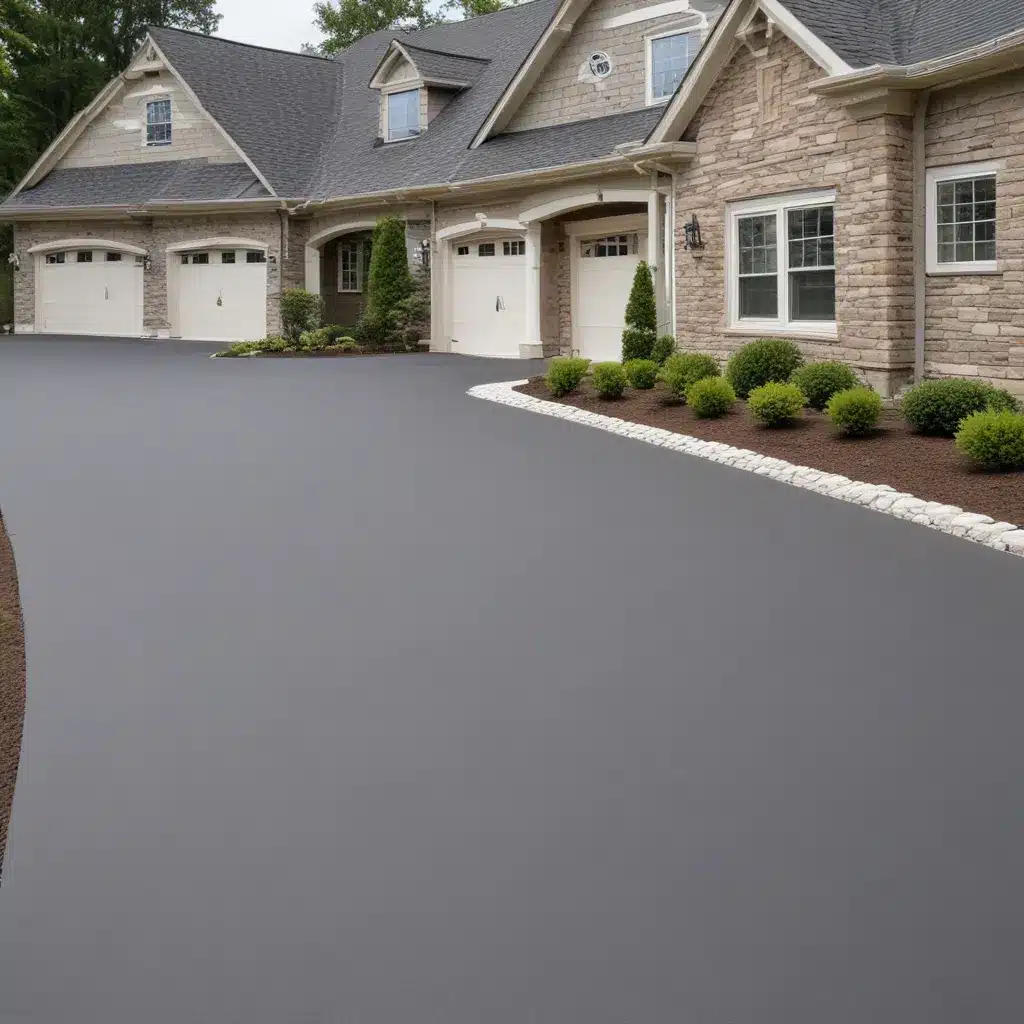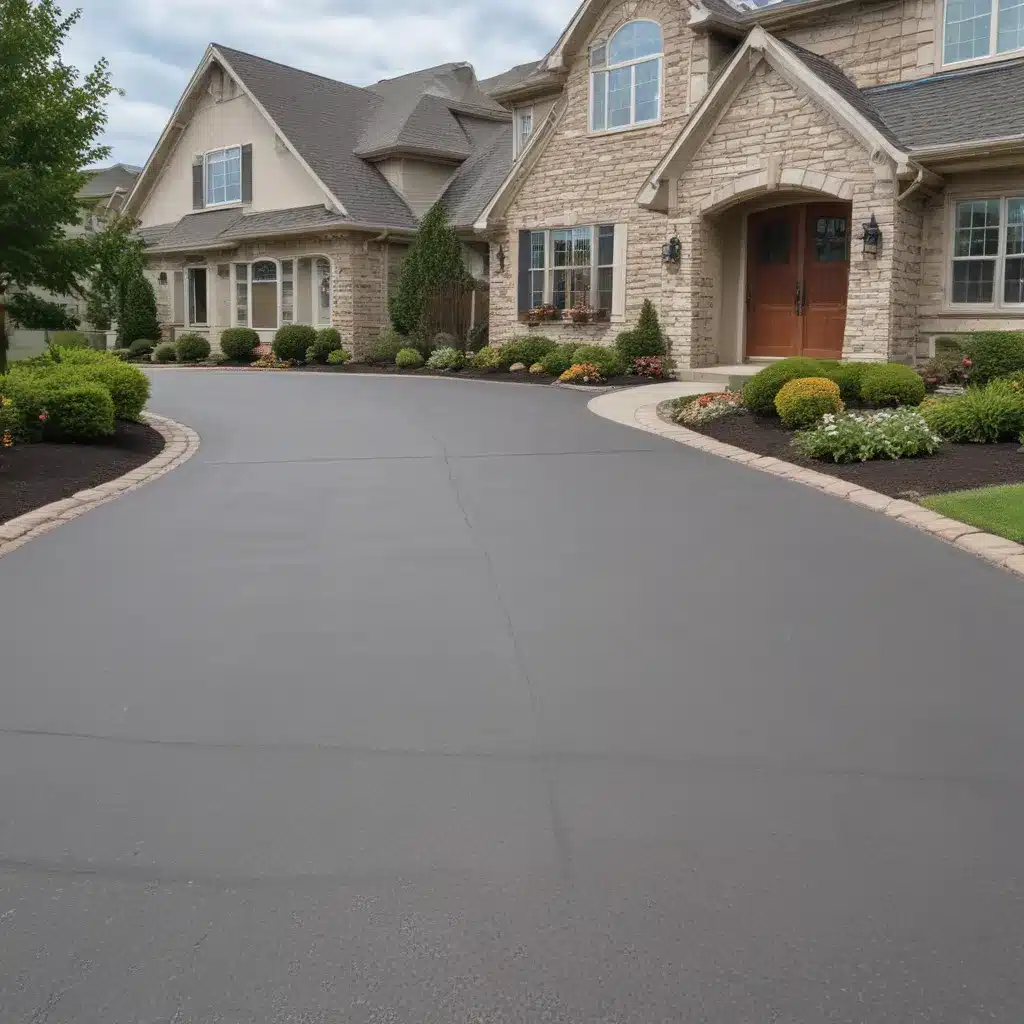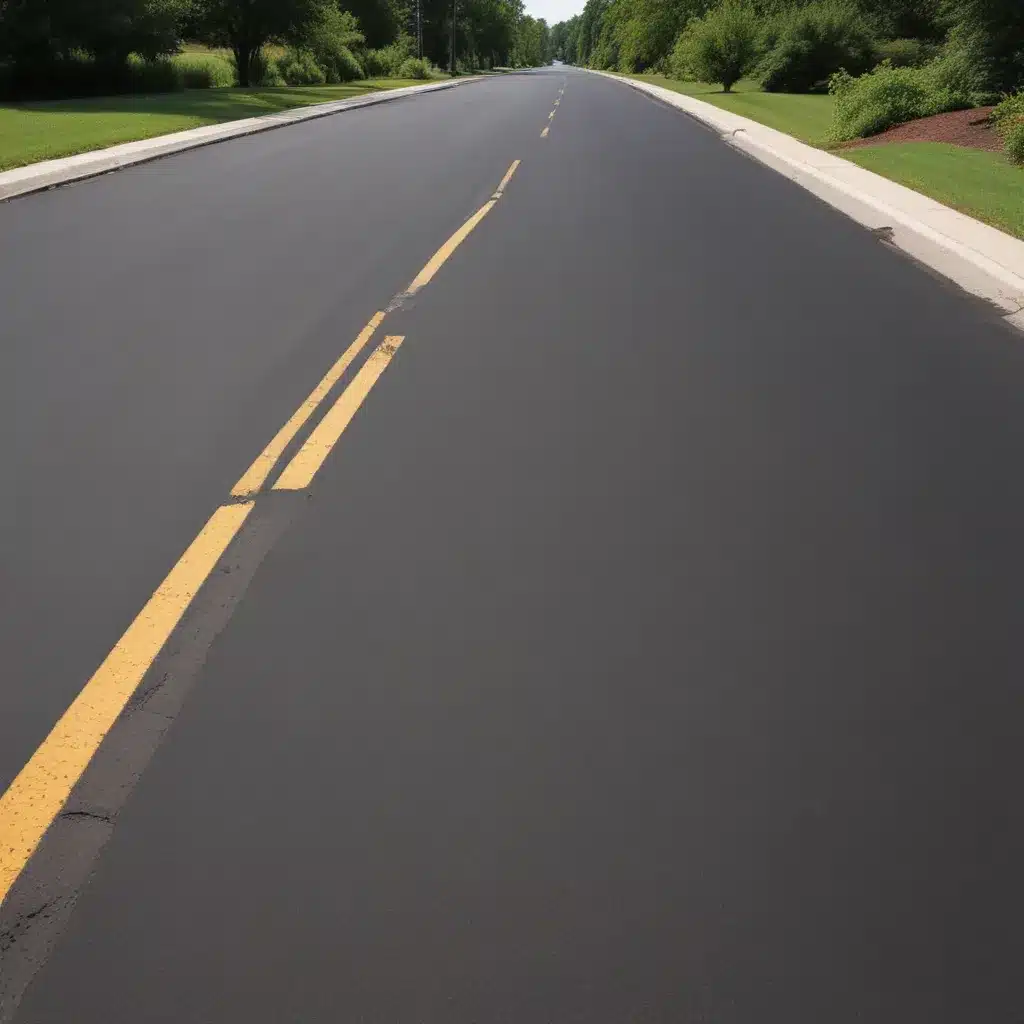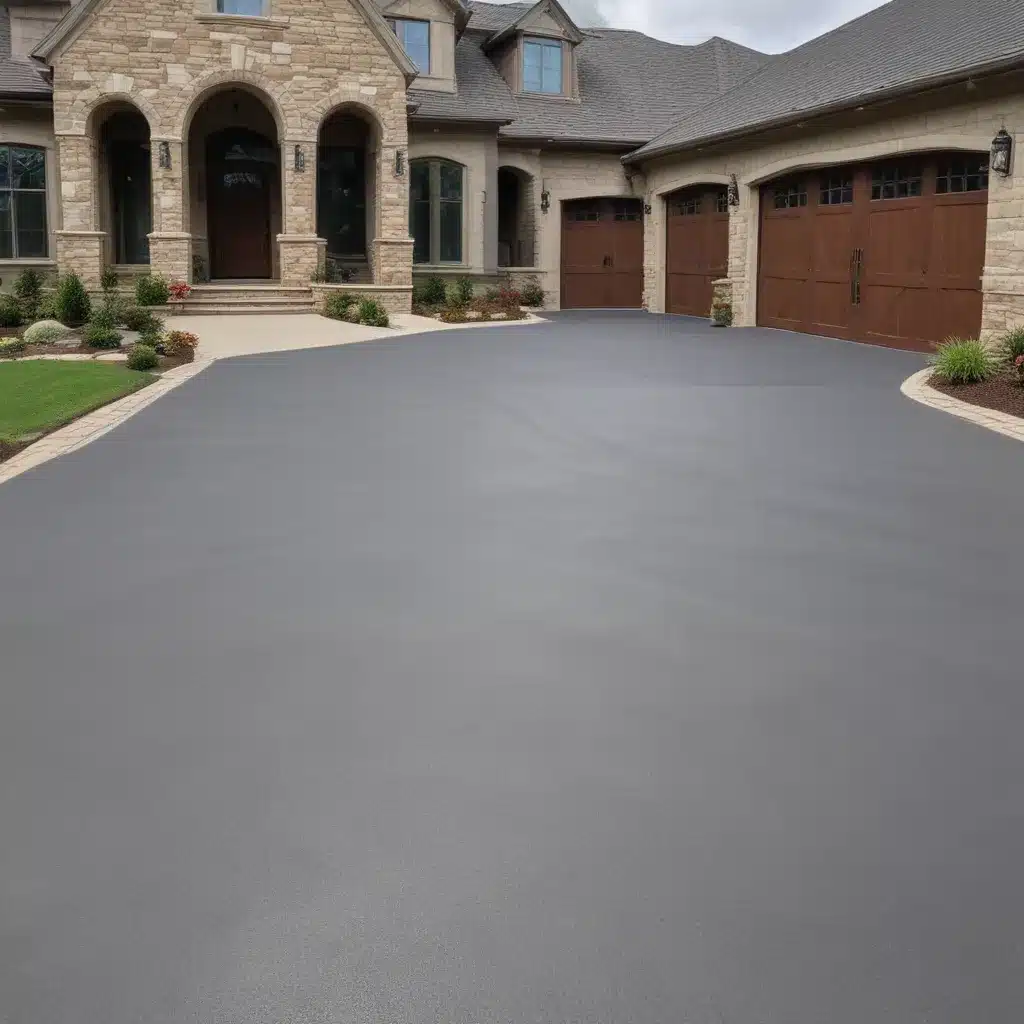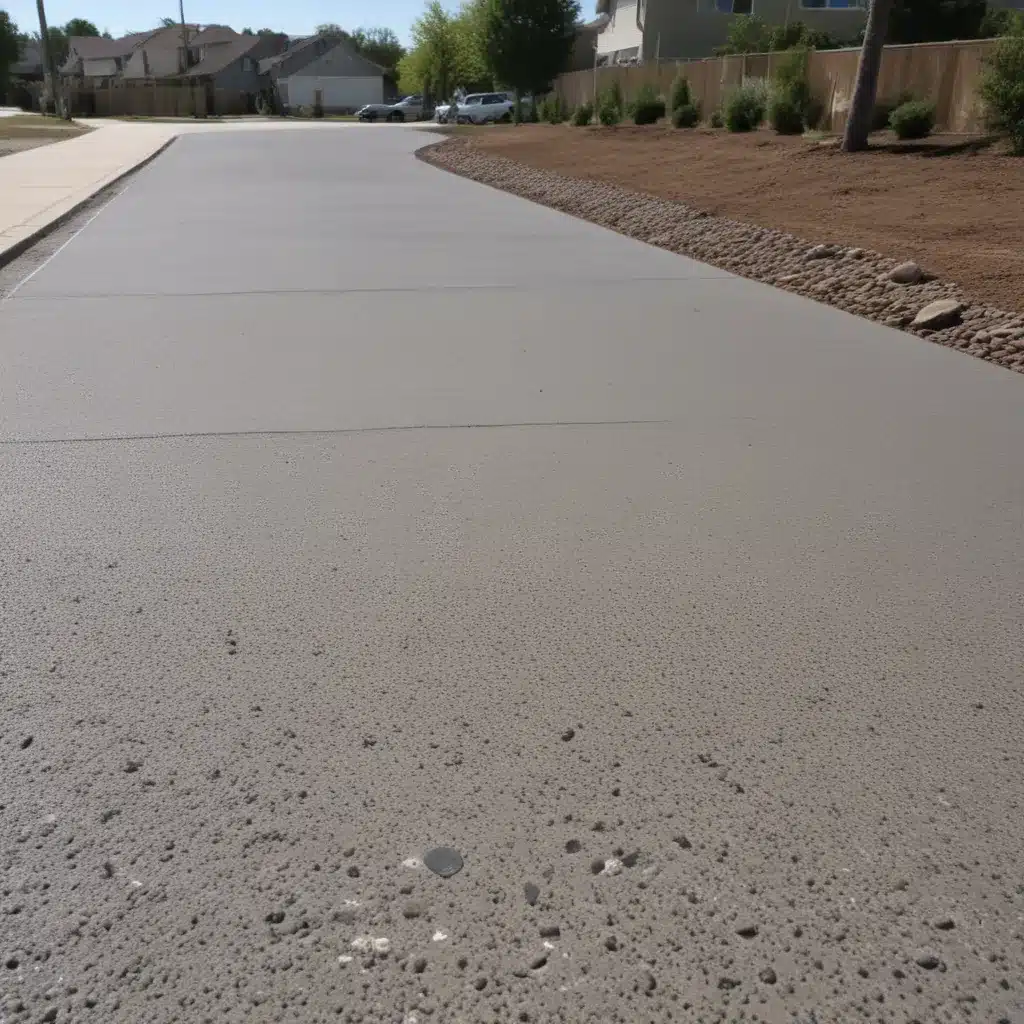The Slippery Slope of Driveway Design
Picture this: you’ve just finished meticulously landscaping your front yard, complete with a lush lawn, perfectly pruned shrubs, and a dazzling array of colorful flowers. But as you gaze upon your masterpiece, your eyes can’t help but drift towards the driveway – that often overlooked, yet critically important, feature of your home’s exterior. And let me tell you, friend, that driveway is giving you the stink eye.
You see, the slope of your driveway is all wrong. It’s either too steep, causing your car to teeter precariously as you pull in and out, or it’s too flat, resulting in a pesky puddle that seems to linger for days after every rainstorm. Either way, it’s a recipe for disaster – and let’s not even get started on the damage it can do to your vehicle’s suspension.
But fear not, my fellow homeowner! I’m here to let you in on a few secrets from the pros when it comes to achieving the perfect driveway slope. And trust me, the journey to driveway perfection is paved with more excitement than you might think.
The Science Behind Slope Perfection
Let’s start with the basics, shall we? The slope of your driveway is determined by the angle at which it descends from the street to your garage (or, if you’re the adventurous type, all the way to your front door). This angle is typically expressed as a percentage, with a steeper slope being represented by a higher percentage.
Now, you might be wondering, “But how steep is too steep?” Well, my friends, the experts generally recommend a driveway slope of between 2% and 5%. Anything steeper than that, and you’re risking some serious driving challenges – think of it as the automotive equivalent of trying to scale Mount Everest in a pair of high heels.
Of course, the ideal slope for your driveway will depend on a variety of factors, including the climate in your area, the local soil conditions, and the layout of your property. For example, if you live in a region with heavy rainfall, you’ll want a slightly steeper slope to ensure proper drainage and prevent that pesky puddle problem I mentioned earlier. On the other hand, if you’re situated in a more arid climate, a gentler slope might be the way to go.
Mastering the Art of Driveway Slope Calculation
Now, I know what you’re thinking: “Slope calculations? That sounds like the domain of civil engineers and mathematicians – not your average homeowner!” But fear not, my friends, because with a little bit of know-how and a willingness to get your hands dirty (literally), you can become a driveway slope master in no time.
The key to determining the perfect slope for your driveway lies in a simple formula: rise over run. In other words, you’ll need to measure the vertical distance (rise) and the horizontal distance (run) of your driveway, and then divide the rise by the run to get your slope percentage.
Let’s break it down with a real-life example. Imagine your driveway has a vertical rise of 1 foot and a horizontal run of 20 feet. To calculate the slope, you’d simply divide the rise (1 foot) by the run (20 feet), which gives you a slope of 5% – right smack in the middle of that sweet spot we talked about earlier.
Of course, actually measuring the rise and run of your driveway can be a bit tricky, especially if your property isn’t perfectly level. That’s where a good old-fashioned carpenter’s level and a tape measure come in handy. Just place the level at the top of your driveway, measure the vertical distance to the bottom, and you’ve got your rise. Then, measure the horizontal distance from the top to the bottom, and voila! You’ve got your run.
The Importance of Proper Drainage
But the story of the perfect driveway slope doesn’t end there, my friends. You see, slope is just one piece of the puzzle – the other crucial element is proper drainage. After all, what good is a perfectly angled driveway if it’s just going to turn into a mini-lake every time it rains?
To ensure your driveway is equipped to handle even the heaviest of downpours, you’ll want to incorporate a few key drainage features. First and foremost, make sure your driveway has a slight cross-slope, meaning it slopes gently from the center towards the edges. This will help channel water away from the center of the driveway and into strategically placed drainage ditches or catch basins.
Another important consideration is the material you choose for your driveway surface. Permeable pavers or gravel are great options, as they allow water to seep through instead of pooling on the surface. Conversely, solid concrete or asphalt driveways will require more elaborate drainage systems, such as underground pipes or French drains, to prevent flooding.
Now, I know what you’re thinking: “Drainage systems? That sounds like a whole other can of worms!” And you’d be right – it’s a complex topic that requires careful planning and execution. But trust me, taking the time to get your driveway’s drainage system just right will pay off in spades, both in terms of preventing damage to your property and keeping your car’s suspension happy and healthy.
Driveway Slope Masterclass: Real-Life Examples
But enough with the technical mumbo-jumbo – let’s dive into some real-life driveway slope success stories, shall we? After all, what better way to learn than from the experiences of those who have been there, done that, and emerged victorious?
Take, for example, the case of the Johnson family. They had recently purchased a beautiful new home, but the driveway was an absolute nightmare – a steep, treacherous slope that had their car fishtailing every time they tried to pull in. But with a little bit of research and a whole lot of elbow grease, they were able to transform their driveway into a masterpiece of slope perfection.
“We started by measuring the rise and run of the driveway,” Mrs. Johnson recalled. “Once we had those numbers, we were able to calculate the slope and determine that it was way too steep – around 8%, if I remember correctly. We knew we had our work cut out for us, but we were determined to get it right.”
The Johnsons decided to tackle the project themselves, using a combination of heavy machinery (a mini excavator, to be exact) and good old-fashioned manual labor. They carefully re-graded the driveway, reducing the slope to a more manageable 4%, and installed a series of strategically placed drainage ditches to ensure water would flow away from the house.
“It was a lot of hard work, but the end result was so worth it,” Mr. Johnson chimed in. “Now, when we pull into the driveway, it’s smooth sailing – no more white-knuckle driving for us. And the best part is, we haven’t had a single puddle since we completed the project. It’s like we’ve got our own personal moat, but without the alligators.”
But the Johnsons aren’t the only ones who’ve mastered the art of driveway slope perfection. Take the case of the Smith family, who faced a unique challenge when they decided to build a new home on a sloped lot.
“Our property had a natural incline, so we knew from the start that getting the driveway slope right was going to be critical,” Mrs. Smith explained. “We worked closely with our contractor to map out the ideal slope, taking into account the local climate and soil conditions. In the end, we settled on a 3% slope, which has been perfect for our needs.”
The Smiths also incorporated a few additional features to ensure their driveway was a true marvel of engineering. “We installed a series of catch basins and underground drainage pipes to divert water away from the driveway,” Mrs. Smith continued. “And we opted for a permeable paver surface, which allows water to seep through instead of pooling on top. It’s like our driveway is doing a little happy dance every time it rains!”
Conclusion: Embrace the Sloped Driveway Revolution
So, there you have it, folks – the secrets to achieving the perfect driveway slope, straight from the pros. But remember, the journey to driveway perfection is not just about numbers and calculations. It’s about embracing the unique challenges and opportunities that come with every slope, and finding creative solutions that not only look great but also function flawlessly.
So, the next time you look out at your driveway and feel the familiar twinge of slope-related anxiety, take a deep breath and remember: you’ve got this. With a little bit of know-how, a healthy dose of elbow grease, and a willingness to think outside the box, you can transform your driveway from a source of frustration to a true work of art.
Who knows, maybe you’ll even find yourself enjoying the process – after all, what’s more satisfying than conquering the slippery slope of driveway design and emerging victorious? So, what are you waiting for? Grab your tape measure, sharpen your slope-calculating skills, and get ready to revolutionize your driveway game. The perfect slope is out there, just waiting to be discovered.

